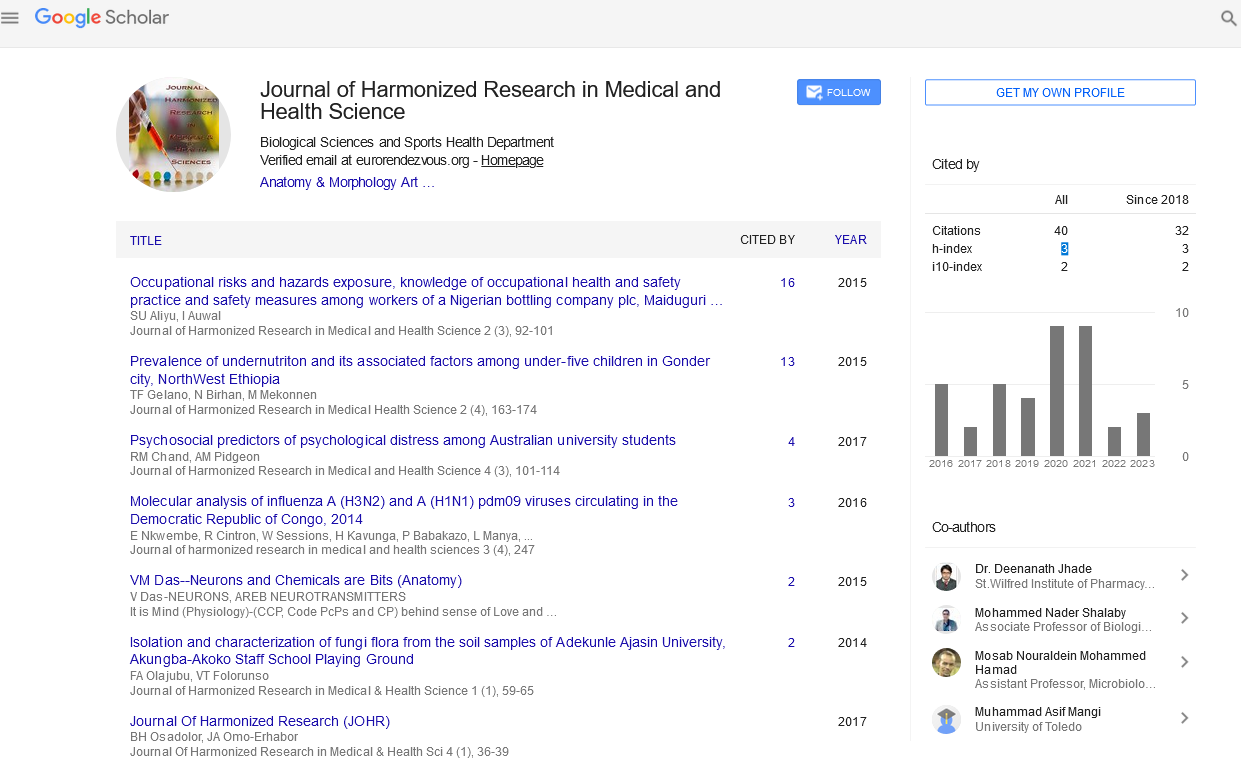OCCUPATIONAL RISKS AND HAZARDS EXPOSURE, KNOWLEDGE OF OCCUPATIONAL HEALTH AND SAFETY PRACTICE AND SAFETY MEASURES AMONG WORKERS OF A NIGERIAN BOTTLING COMPANY PLC, MAIDUGURI, BORNO STATE
Abstract
Author(s): Salamatu Umar Aliyu*, Ibrahim Muhammad Auwal.
Background: Working in an industry is full of potential risks and hazards that can be mitigated through proper occupational health and safety practices or adoption of safety precautionary m easures and use of personal protective equipments among workers. Aim: The purpose of this study was to investigate exposure to occupational risks and hazards, knowledge of occupational health and safety practices, safety precautionary measures and use of protective equipments among workers at a Nigerian bottling company. Method: A close-ended structured questionnaire adapted and modified from the Weymouth and Portland health and safety questionnaire was used to investigate health and safety of the workplace. The questionnaire consists of four sections which sought information on workers sociodemographic characteristics, occupational risks and hazards exposure, knowledge of occupational health and safety practices and safety precautionary measures and use of personal protective equipments among workers. Sample of convenience was used to recruit a total of 231 workers at the Nigerian bottling company Plc Maiduguri. Result: It is a male dominated workplace comprising of 226(97.8%) males with mean age 25.2±7.1 years. About 50.6% of the participants were permanent staff, while 43.3% had a diploma. Exposure to occupational risks and hazards in this bottling company was majorly moderate among workers (48.5%) with (24.7%) high exposure among workers. Significant association was found between occupational risks and hazards exposure and age (p<0.05). No association was found between the level of exposure of occupational risks and hazards, gender (p>0.05) and educational status of the participants (p>0.05). The workers have a good level of knowledge of occupational health and safety practices (66.7%). Significant association was found between knowledge of occupational risks and hazards, age (p=0.05) and educational status (p<0.001). Participants in this bottling company also have good adoption of safety precautionary measures and use of personal protective equipments. Conclusion: The study revealed more than a quarter of the workers were exposed to high occupational risks and hazards exposure among workers at the Nigerian bottling company Plc. Also majority of the workers have good knowledge of occupational health and safety practice with good adoption of safety precautionary measures and use of personal protective equipments. It is recommended that government should enforce compliance to health and safety measures in industries so as to minimize to minimum the level of occupational risks and hazards. In the same light government and supervising institutions should enforce compliance to occupational health and safety measures in the industries. Keywords - Occupational Risks and Hazards Exposures, Occupational health and safety practice, Personal protective equipment, Safety precautionary measures.










